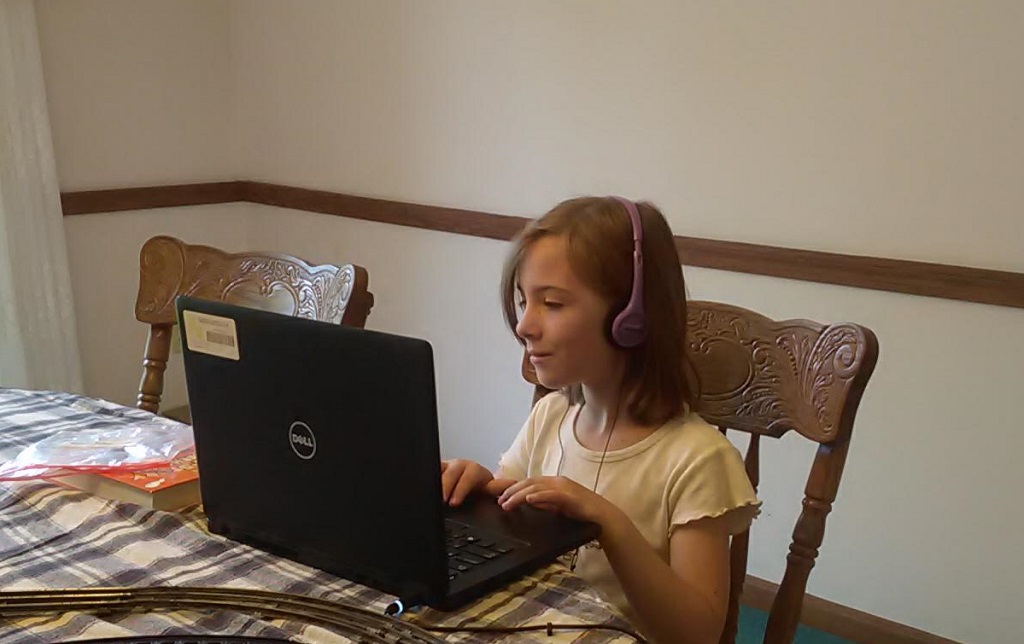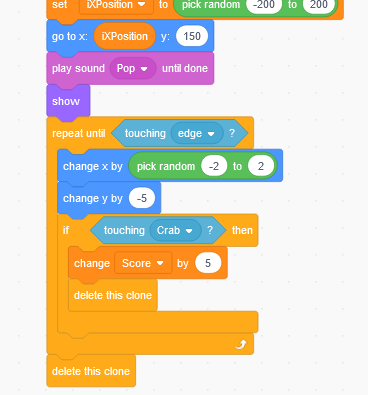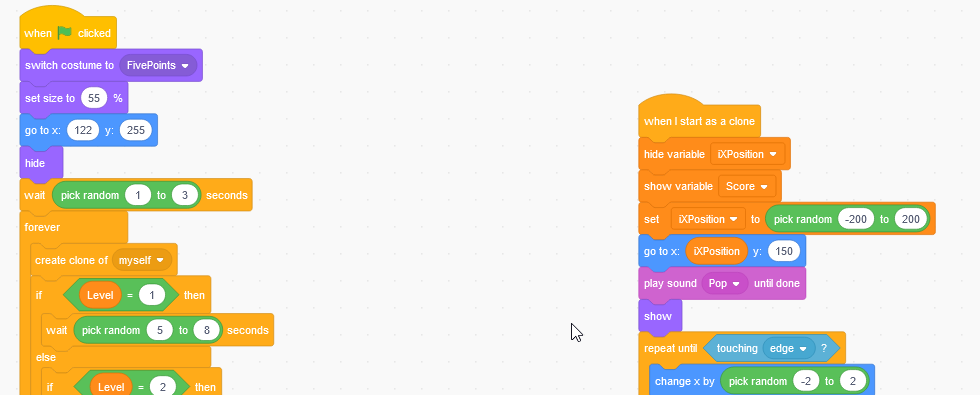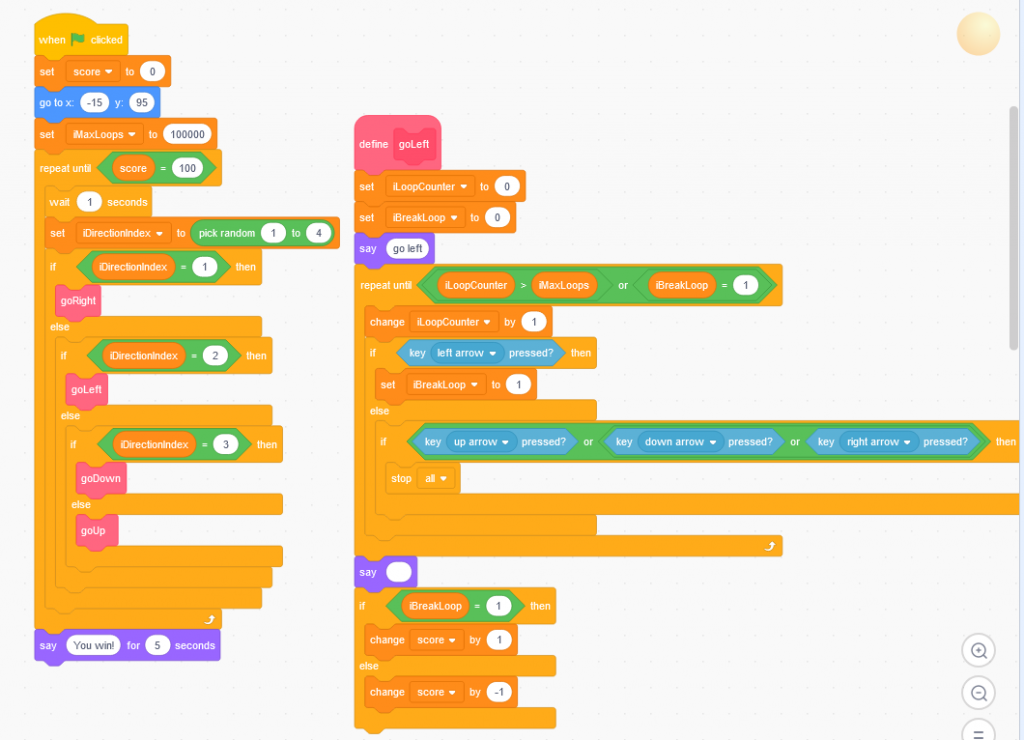Category: Parenting
Letter Monsters
When Anya was first learning her letters, I made a bunch of letter monsters. They had lots of sharp teeth and look very chompy.They also all had names, stories, and adventures … I was reminded of them when someone in a parenting group asked how they could encourage their kid to learn the sounds letters made. The stories for the monsters were all letter themed — Collette works as a cabdriver — her car has “CAB” written in a big chartreuse circle. When she is done working, she cleans her car and collects anything passengers may have forgotten. She enjoys a cup of coffee in the cafeteria before heading home. When she is at home, she cares for her cat. And, yeah, drawing a toothy letter monster snugging a cat is a challenge 🙂
Connections Academy – Planner UI/UX Issues and Learning Module Voices
I was surprised at the voices used for the cartoon characters in Connections Academy’s learning modules. Anya paused her maths lesson to tell me the lion is shrill. And proceeded to mimic the voice. I had her play a little of it for me and, yeah, it’s awful. The ladybug in the language arts module is better, but that’s a terribly low bar. I’d expected there to be a few voices from which we could select — not just because someone may well find a voice objectionable, but also because some people have frequency specific hearing loss — someone with trouble hearing high frequencies isn’t going to be able to use these modules. I set up an in-browser audio equalizer and dropped out high frequencies. Makes it usable, but I’ve still submitted feedback with my observation.
Then there’s the planner. I’ve noticed a few UI problems in the Planner —
- I am frequently unable to save an event – in cases where something is not populated, the missing item is highlighted in red. That’s not what I’m talking about – I’ve got all of the required fields populated, nothing is highlighted when I click ‘save’. It just stays on the item creation form. I am able to cancel item creation, try again, and get an event created.
- When the purpose is set to “Enrichment”, items cannot be opened/edited/deleted.
- When creating a new item, expanding the “Recurrence” section produces an overlap between the “Description” field and the top line of the recurrence selection. The description field is on top, which renders the top half of the check-boxes unusable.

And more of a UX issue … while the event items can include half-hours, the credit hours field appears to be an integer value. It is auto-populated with a float. Which leads me to expect

School Starts and a Math Game
It’s back-to-school time — at least for Anya! The local district put off starting school until mid-September in what I assume is an attempt to let other districts see how bad SARS-CoV-2 spreads … but we decided to try Connections Academy instead. It’s a dedicated online school, rather than a few local teachers using a third-party online platform (and going into school was right out). She’s bummed about “missing out” on a month of summer vacation … but August classes in our air conditioned house are a lot more pleasant than classes in the massive concrete block 60’s building with windows that open.
The school sent out info to use https://www.prodigygame.com — a wizard adventure game that Anya absolutely loves (even if casting spells requires solving math problems).
So far, I think Connections Academy are a little unorganized. They’ve got a calendar, but few of the meetings get populated into it. They’re using the first week or two of school for everyone to get themselves sorted — log in, learn the platform, make sure they’ve got their materials. The actual education platform is starting out the same place 1st grade did — using manipulatives to add. The teacher said Anya would take a placement assessment in early September and the education modules would be jumped to whatever is reasonable for the kid based on their assessment. Hopefully!
She’s been going through the educational modules quickly, so I’ve come up with a few experiments. I also signed her up for a Scratch class on Outschool — and I’m thinking about teaching more advanced Scratch classes since none seem to exist … essentially teaching programing concepts like variables — what they are, what scope is, data typing and loosely typed languages, and debugging by watching variable values. She’s really enjoyed the class, and she’s certainly learned to write her own game. We’ve also talked about the scientific method — using spontaneous generation as an example and designing an experiment to prove that mice magically pop out of rotting straw. Which points out something I’ve always liked about science. We’re medieval scientists who want to prove this generally known fact, we design a really good experiment, we meticulously carry out our experiment … and no mice. Even though our experiment failed to prove our hypothesis … we’ve still made an amazing discovery.
What you know
I don’t get why school boards (and businesses, for that matter) are so stuck on attempting to replicate what we had two years ago. It’s like some form of denial — it’s going away soon, no reason to rethink things we’re doing.
I cannot help but think of veggie burgers. Attempts to be “beef like” are generally awful. Attempts to make a flavorful, filling, crunchy sandwich filling that bears little resemblance to a beef burger? Lots of delicious options. I think that was what I liked so much about SNL’s at home episode … it wasn’t *trying* to be like an in-studio production. It was a new thing that was entertaining in its own way. I don’t know what the school version of my spicy garbanzo sandwich or SLN@Home would be … but, having seen The Reopening Plan, I know that my local school board spent the last four or five months trying to figure out how to achieve the most school-like thing possible regardless of the long-term feasibility of the solution (and they’ve got a slide detailing the “swiss cheese” approach to risk mitigation … something gets through each layer but risk is mitigated by the aggregation of layers. Nothing says safety like swiss cheese!).
Creating continuity between in-class and at-home learning so individuals with resources (time, money, internet access, computers for kids to use) could participate at home and reduce the number of people on the bus, in the classroom, at lunch, etc does not appear to have been an avenue of exploration. This would allow individuals in quarantine to continue their education uninterrupted, too. The district’s plan right now is … they’ve got no idea what to do when a class full of students is asked to stay home for two weeks.
Reopening Plans
Yeah, this is going to be a nightmare. I have an awesomely well behaved kid. One with a lot of deference to non-parental authority. She’s also decidedly not an automaton and does her own thing. Which is developmentally great, but not so great in a carpark. She would totally wear a mask all day in school, even if it’s 90 degrees in the classroom (which happens, no AC in this old building). She will walk in a spaced-out line and play by herself at recess if that’s what the teacher says to do. She’ll also rub at her eyes, do a crap job of washing her hands before eating (and there’s no way the teacher is ensuring everyone is properly clean before lunch and snack), take her mask off while walking up the driveway and chew on her finger because she’s growing a new molar. There are kids who had three warnings in a day *before* all of these risk mitigation rules went in place.
How much time is a teacher going to spend teaching when they’re also reminding kids to keep their masks on, not share that crayon, no you cannot move your chair and sit closer to Timmy. Even if online education isn’t as effective as in-person education was two years ago … I think it is going to be far more effective than trying to teach in between warning kids about breaking rules.
And that’s just elementary school kids. From what I hear from friends with older kids, the district has been completely unable to address physical assault (which they like to call bullying, but someone who walked up to me on the street and punched me in the face would totally be getting changed with assault). How in the world are they going to address someone who thinks its a gas to rip off someone else’s mask and sneeze in their face?
At that, how are they going to address someone who gets sent into school with a fever? From a strange conversation I had with the nurse’s office when my daughter had bloodshot eyes from allergies, I kind of gather that the nurse cannot make medical diagnoses and could not *make* me come pick her up. Five cycles of “I’m sure you want to get her tested for pinkeye” / “she’s got allergies” and I gave up and got my kid. I guess they can use the gymnasium as a room for possibly infected kids sitting 20′ apart.
Kid Coding
I’ve seen a number of articles written by developers and IT folks promoting how they won’t be teaching their young kid to code. Of all of the arguments against teaching kids to code, the only one that really strikes me is the fact that a lot of parents don’t know how to code themselves. Now, I expect it is possible to not know French but manage to cobble together some approach to teaching your kid French. It’s a lot easier (and the results are apt to be better) if you actually know some French. My decision to teach my daughter to code doesn’t mean it’s a vital skill that every kid needs to learn to prepare them for future jobs. But, since it is something I do, it is something I share with my daughter. If she weren’t interested in what is going on beyond getting it all typed in, I’d stop. But she’s interested in exploring beyond what the coding book tells her to type. As we created a little character on the screen, Anya wondered if we could make different little figures. At different locations. In different sizes. In different colors. In using Scratch, she develops characters and game play.
Why teach a seven year old kid to code? Why do you teach your kids anything apart from the mandatory school curriculum? Working on the car? She can help and learn a bit about how vehicles work. I replaced the tube on my bicycle tire, and she helped. She was aware that bicycle tires had replaceable tubes that could explode on you … which was useful knowledge when she blew out her own tube. She sews with me — embroidery and a machine — because being able to patch clothes saves having to replace things as frequently. Mowing the lawn – she’s aware that a house with a lot of land requires work and knows how to safely operate both the push and riding mowers. Gardening – she knows where food comes from, how to grow her own, and how much work actually goes into feeding the country. She’ll participate in chicken keeping – somewhat so she knows where eggs come from and the amount of work that goes into egg production, but also because pets are fun (and our chickens will certainly be more socialized with her involvement). We share all sorts of activities with our daughter because we enjoy them. Some intrigue her, some don’t. But how do you learn where your interests are if your exposure is limited to reading and math for the first decade, then science and history for the next almost decade?
All of that provides useful, practical knowledge. And learning to code is certainly useful and practical. But the utility of such knowledge, the practicality of such knowledge isn’t the reason I am teaching my daughter to code. Or, for that matter, the reason I’ve taught her anything else at home. These activities involve deductive reasoning, analytical thought, problem solving, research skills, or accepting instruction from others. All of which are generally useful in life.
Statistical Coverup
School’s Out For …
I want to know what schools are going to do in September/November after what they did in August proves to be foolishly optimistic (either ‘the virus will disappear’ or ‘one person will be able to ensure twenty six-year-old kids wear masks and stay 6 feet apart, plus we can have a janitor in each restroom sanitizing after each use’) and they’ve failed to use the intervening 4-5 months to develop a decent online teaching approach.
Scratch
A few of the books I got for Anya are introductions to programming — Python, C++, and this GUI block-based system called Scratch. She likes using Python because Scott and I use it, but she absolutely adores Scratch. She has A Beginner’s Guide To Coding (Marc Scott) that I picked up from Book Outlet (I get a bonus 10$ when someone uses my referral link) for a couple of bucks. We’ve got a studio of our games online, and she’s excited to share the games with family members.
Tricks we’ve leaned so far:
- The UI will not match a book written a few years ago 🙂 This reminded me a bit of the “Internet Directory” book I had in 1994 … an obviously silly concept today, but a completely reasonable thing in 1994 when a decent bit of the content was still modem numbers. A book about a UI … it’s a good base — providing great first projects. But it took Anya a little while to accept that, while the book quite clearly told her to click an icon that looked like this … in the intervening 18-24 months, the UI had changed. How did I know this is what you click now? I mean, other than the fact it goes into the thing that has the same function as the one your book describes? A good guess!
- You can create variables with the same name. I am certain they are assigned some underlying UID that you never see, but if you have two variables named ‘score’ and the score doesn’t seem to be incrementing … look at your variable list.
- Variable scope of “this sprite” and “all sprites” is straight-forward until you create clones. “This sprite” means “this clone of a sprite”. We had a “all sprites” variable for speed and all of the clones will change speed each time a new clone pops in. This is cool if it’s what you want to do. I’ve also created variables scoped to “this sprite” to build clones that move at different speeds.
- You cannot, unfortunately, change a variable’s scope after you create it. You need to make a new one.
- The “glide” motion isn’t good for sensing collision. While the glide is in progress, that’s the block that is executing. Anya has a game where a crab collects crystals while avoiding divers which uses the fact you cannot check if Thing1 is touching Thing2. The grab can move through gliding divers with impunity. If you want to detect collisions, use a loop where the X and Y coordinates are changed in small increments instead of glide. Technically, there’s no collision detection while my X coordinate is changing, but that’s such a brief time interval that you cannot effectively avoid bumping into the other sprite while it moves.
- You can avoid the sprite being moved off of the screen to avoid collision by adding a bounce when the sprite is on the edge.
- You need to zero out your variables when the green flag is pressed, otherwise replaying the game by clicking the green flag again produces really strange behavior (you’ve already won or lost)
- Fractions can be used in places where they have integer examples. Specifically, you can pause for fractional seconds.
- When using clones, hide the “base” sprite that exists in the ‘when green flag clicked’ instantiation; use a ‘show’ in the ‘when I start as a clone’ block. Otherwise you have one sprite sitting at the edge of the screen
- “My Blocks” is used to build functions. In Anya’s Simon Says… game, we use the pseudorandom number generator to select “Simon’s” instructions and call a block based on the generated number.





